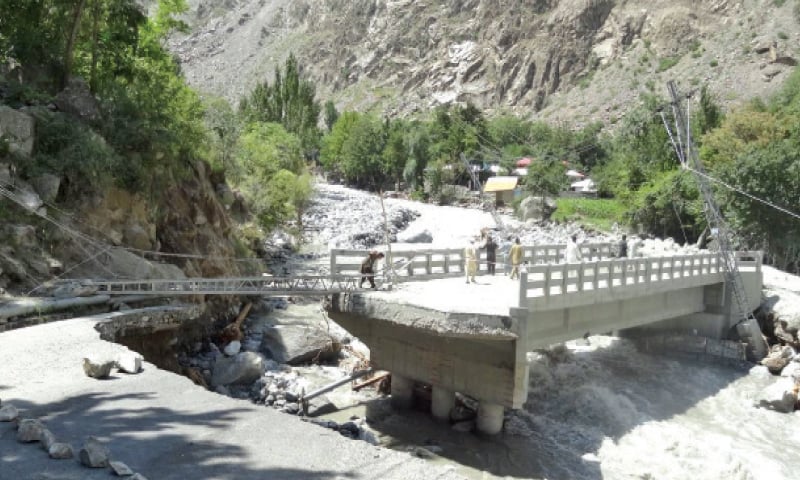CHITRAL: The glacial lake outburst flood (Glof), which struck the Golen valley on the evening of July 7, has damaged the headworks of the 108MW Golen hydropower station, leading to its shutdown, thus exposing the technical fault and lack of proper planning by Wapda.
Five suspension bridges constructed by Wapda over the streams were also washed away along with a six-kilometre-long road, disconnecting the valley from rest of the district for four days.
The RCC bridges and the road were constructed three years ago as part of the hydropower project whose water channel has its headworks right in the middle of the valley.
The residents said Wapda engineers and planners utterly neglected the specific geographical features of the valley and their advices were always turned down whenever they wanted to share their experience with them.
Abdul Wali Khan Advocate, a former member of district council from the area, said destruction of roads and bridges coupled with the headworks of the power channel due to Glof showed design was faulty.
He said Wapda did not carry out study of the physical features of the valley which had large volumes of glacier in its highland with eight glacial lakes which had been declared sensitive by the environmentalists long ago.
“It was mega project of Rs15 billion whose feasibility study should have considered all the facts of the area’s topography,” he said.
Wali Khan said the locals had time and again expressed their reservations regarding the design and alignment of the road and the position of the headworks of the power house on the basis of their local knowledge but the arrogant engineers turned them down,” he said.
Hajeebullah Khan, an octogenarian of Bubaka village of the valley, said during his lifespan, he had witnessed three Glofs, including the recent one, which spelled more disaster to the agricultural lands, homes and fruit orchards than the earlier two because this time the low-lying bridges diverted the floodwater to the villages.
Rafiq Ahmed, a civil engineer working with an international organisation, said the spanning of all the bridges was too short to withstand the abnormal floods as it was evident that the abutment of all the five bridges had been washed away while the superstructure and decks remained intact.
He said the positioning of the headworks of the power channel was also defective due to its proximity to the stream and the designers had consigned to oblivion the hard fact that Glof would pass through the stream anytime.
Published in Dawn, July 27th, 2019















































Dear visitor, the comments section is undergoing an overhaul and will return soon.